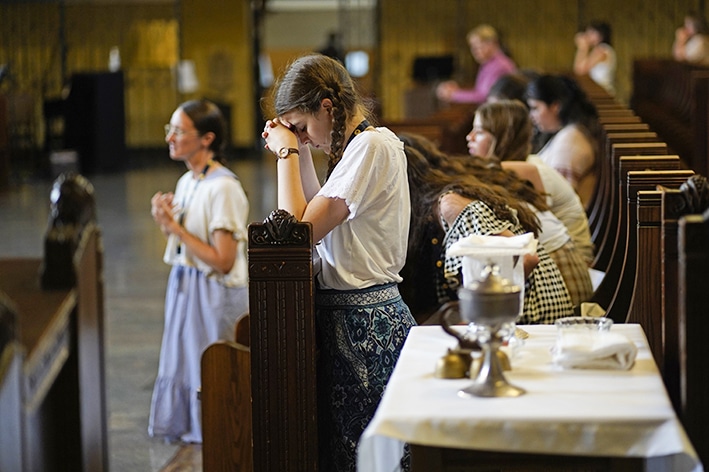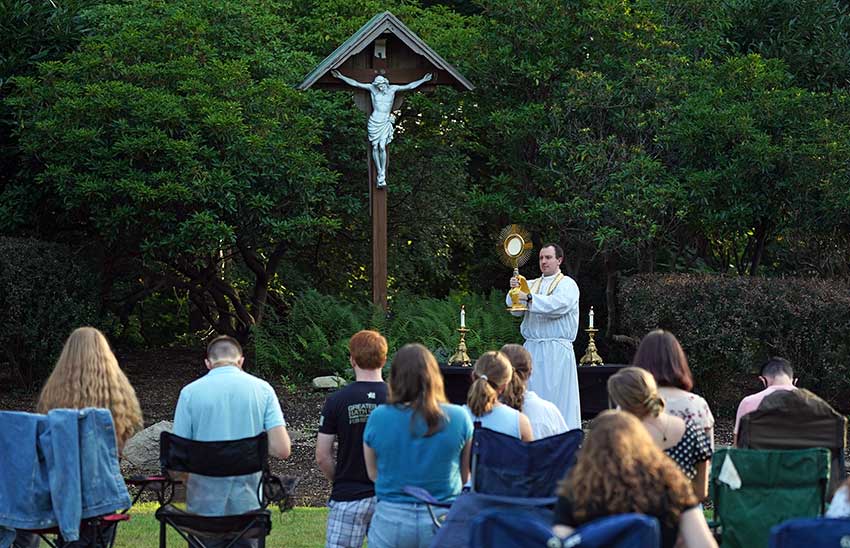
“Blessed are the pure of heart for they shall see God” (Mt 5:8).
It must, then, be possible to became pure of heart and thus to see God.
Perhaps we can say that to be “pure in heart” means that internally we have regained the original state of cleanness, openness, and innocence which we were intended to have.
To be pure of heart is to become good in our feelings and impulses, without any division or conflict.
It is, in brief, to have a heart cleansed and remade in the image of God (Gen 1:26-27), united to his will.
The Maronite liturgy often speaks of restoring the divine image which has become distorted and corrupted by sin.
The saving work of Christ was undertaken to repair and purify this divine image.
We find redemption when we participate with right disposition in the sacraments, and strive to learn and to follow his commandments here on earth.
In these endeavours, contemplation can be of great assistance by assisting us in coming to a right disposition, meaning to have attitudes, thoughts, and feelings oriented towards God, his goodness, beauty, and truth.
The true purpose of contemplation is not to lead us to see visions or hear celestial music.
It is not even to provide some sort of foretaste of the beatific vision, but that vision is the purpose of our lives, and contemplation can help us lead better lives.
It can help us cooperate with the divine work of renewing the image of God within us.
Within the Eastern Christian tradition, contemplative work can be said to fall into three broad categories: preliminary and preparative; collection and concentration; and finally, the education and direction of feelings and thoughts.
The work itself cannot be well-described in writing; it is rather like trying to explain with words the difference between the taste of lemon and vanilla.
Further, the categories overlap, and we move back and forth—so that one may be confronting an internal inclination to a particular sin, and then have to leave off, returning to the collected state, if the confrontation is too sharp.

One can see how the advice of an experienced counsellor can be indispensable, and why it is often said that it is better not to attempt to teach oneself, but rather to wait until one has a guide.
This sounds hard, but it is the truth, for Jesus said: “the gate is narrow and the way is hard that leads to life, and those who find it are few” (Mt 7:14).
Our Lord did not intend that we not seek the narrow way, but rather to admonish to build our house upon the rock of hearing His words and following them (7:24-27).
All along the spiritual road, one is obtaining glimpses of the face of God—hopefully obtaining more and deeper sights; and one is also purifying oneself of sinful tendencies, and shoring up weaknesses.
For this work of cleansing, we need to be able to see ourselves as we are, one feature at a time, and to confront that reality.
If we have a deep yearning to see God, then to see our faults is to start to change them, for they become aligned to that yearning.
The road is endless, and our desire grows greater, for perfection is impossible in this world.
But our true home is in heaven.
I must add some warnings. Many people teach meditation, contemplation and internal prayer, in various ways and via various media. Some do it better than others.
But note first, that there is no true substitute for a spiritual director who can work with an individual, person to person, especially as we take the first steps of a spiritual pilgrimage.
Second, there are grave dangers associated with meditation, most signally, the well-established phenomenon of meditation-induced dissociation, i.e. “a disconnection between thoughts, emotions and physical sensations that is exacerbated by contemplative practice,” as the scholar and psychologist David Treleaven describes it.
Third, despite what many on the internet say, prayers and meditation should not be linked to the rhythm of inhalation and exhalation.
In the Orthodox tradition there is a division of opinion concerning the Jesus Prayer, but the more ancient rule is not to link its frequent use with breathing since one should be able to pray the Jesus Prayer even while speaking to another, or while running, or if one has trouble breathing.
Further, forging such a link can lead to semi-trance states, inimical to spiritual awakening.
A particularly honest teacher of so-called “centring prayer” acknowledges that it has a significant potential to flip people into a dissociative state, and hence this practitioner has been trying to change the centring prayer.
The best advice, then, is to steer clear of Eastern meditation and centring prayer.
If I wish to see God, then I must aim to be pure of heart, and to live as Christ ordained, within his church, the ecclesia which he has called to himself from out of the world. And contemplation can help us safely free ourselves from the errors of this world as we travel onwards and upwards.
